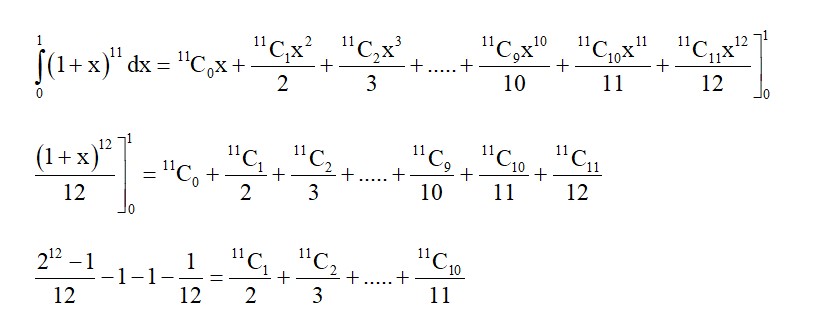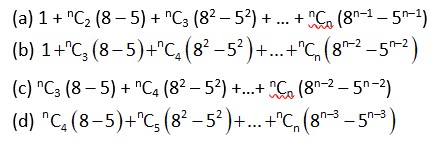Binomial Theorem
Get insights from 76 questions on Binomial Theorem, answered by students, alumni, and experts. You may also ask and answer any question you like about Binomial Theorem
Follow Ask QuestionQuestions
Discussions
Active Users
Followers
New answer posted
a month agoContributor-Level 10
For integral term
6 should divide r
and must be integer
->2 most divide r
->r divisible by 6
->possible values of r Î {0, 1, 2, …824}
->For integer terms
r Î {0, 6, 12, …822} (822 = 0 + (n – 1)6 Þ n = 138)
= 138 terms
New answer posted
2 months agoContributor-Level 10
The common mistakes can be - using the formula incorrectly, before applying the formula students not simplify the expression, in Binomial Expansion, sometimes they forget to include the fractional and negative exponents, and using incorrect values for a, b, and n.
New answer posted
2 months agoContributor-Level 10
The Binomial model is known as the Lattice Model or Binomial Option Pricing Model.
New answer posted
2 months agoContributor-Level 10
There are a total of 36 questions comprising 14 straightforward formula-based sums, 16 challenging problems, and 6 intermediate.
New answer posted
2 months agoContributor-Level 10
Mathematically, binomial theorem formula is: (a + b)n = nC0 an + nC1 an - 1b + nC2 a n – 2b 2 + . + nCn – 1a.bn - 1 + nCn bn. Here a and b are real numbers and n is a positive integer.
New answer posted
2 months agoContributor-Level 10
An expression with two terms raised to a positive integer power can be expanded in Maths, such as (a + b)? This algebraic rule is known as the Binomial Theorem.
New question posted
2 months agoTaking an Exam? Selecting a College?
Get authentic answers from experts, students and alumni that you won't find anywhere else
Sign Up on ShikshaOn Shiksha, get access to
- 65k Colleges
- 1.2k Exams
- 679k Reviews
- 1800k Answers




